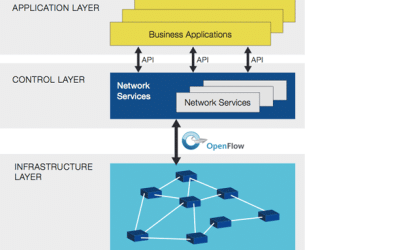 While the cloud is a fantastic new technology that provides companies with numerous benefits, it doesn’t necessarily mean that every company should switch their entire infrastructure to the public cloud. Some companies are not able to go to the public cloud, and they may want to keep some of their servers on-site.
While the cloud is a fantastic new technology that provides companies with numerous benefits, it doesn’t necessarily mean that every company should switch their entire infrastructure to the public cloud. Some companies are not able to go to the public cloud, and they may want to keep some of their servers on-site.
There’s nothing wrong with slowly adopting the cloud. Companies with this line of thinking may want to consider private cloud solutions since much of what they are looking for can probably be acquired through convergence of technologies on-premise. While private cloud solutions do require a little effort, companies using them will have more control over their data and security–something that public cloud offerings don’t always provide.
There is a difference, however, between virtualizing servers and having a private cloud. They are not one and the same. The following are questions companies should ask of their practices:
- Have they standardized on a single platform or are they using different network, virtualization and storage pieces – thereby creating a mixed infrastructure?
- Have they consolidated their environment or begun to do so?
- What type of administration are they using for their virtualization?
- Do they offer a self-service portal? Does that portal provide a truly automated process for computing, storage, and network?
Many companies are most likely missing orchestration, which is the coordination, management, and automated arrangement of their computer systems and services. Every private cloud should have the ability to provide orchestration.
Orchestration will also allow companies to view consumption-based metering as well as capacity planning, thereby allowing them to figure out how much it will cost to put up certain servers using a certain amount of storage space and providing whatever services they want their server to provide. Most on-premises infrastructures don’t work that way. Instead, their IT is expected to both configure servers as well as server applications in addition to providing storage and maintaining the environment – and all for free. It’s essential to be able to see showback (used to display the costs of consumption usage without having actual bills sent out to the departments) or chargeback (where the actual costs are passed to the departments using the resources) in order to recoup costs and ensure the profitability of IT.
This may make it seem like providing orchestration in private clouds is incredibly complicated and overwhelming, but there are a number of components to assist with this. In addition, all major providers have orchestration options; this includes Microsoft System Center Orchestrator 2012 R2 or the Cisco Data Center Orchestration.
It’s important to remember that automation and orchestration will not only affect the compute layer, but it will also affect the network, security, storage, and load balancing. It’s important for companies to make the right converged infrastructure decisions so that they can begin moving to a private cloud offering when adding automation and orchestration. There is definitely a learning curve involved with setting up a private cloud; that learning curve has companies jumping to public clouds immediately to avoid the hassle. But companies that are not ready should take advantage of convergence offerings and get the right help in order to set up a hybrid cloud or a private cloud.



